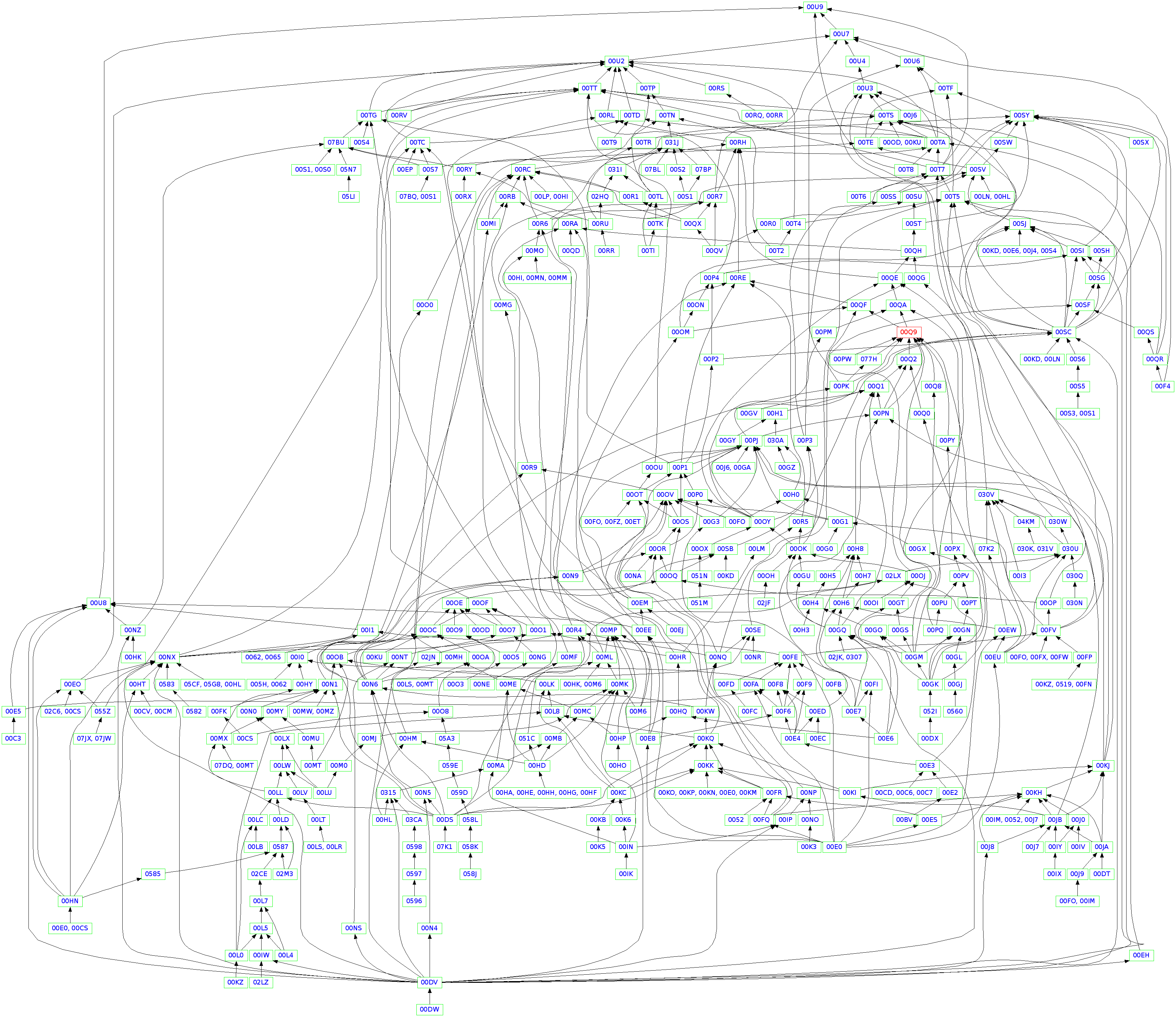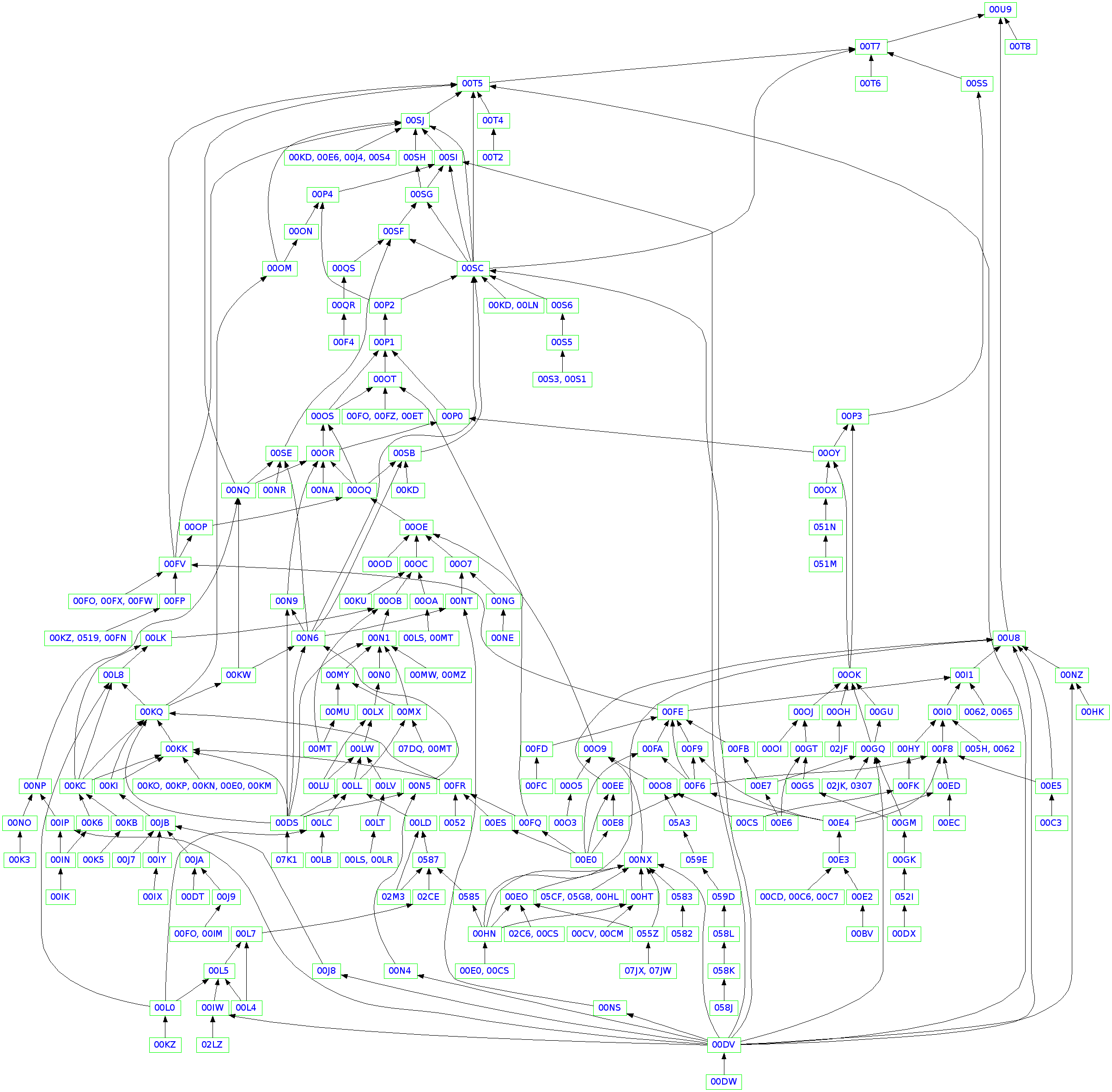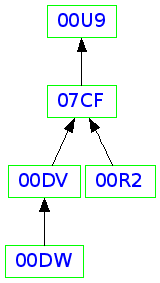Fix a field k. Let X be a variety. Let ε : X_* —> X be a proper hypercovering (see earlier post). Let Λ be a finite ring. Then we have H^*(X, Λ) = H^*(X_*, Λ) for H^* = etale cohomology. This follows from the proper base change theorem combined with the case where X is a (geometric) point, in which case it follows from the fact that there is a section X —> X_*. (This is a very rough explanation.)
Now let k be a perfect field of characteristic p > 0. For a smooth proper variety X over k denote H^*(X/W) the crystalline cohomology of X with W coefficients. So for example H^0(Spec(k)/W) = W. Similarly H^*(X/k) is crystalline cohomology with coefficients in k, so that H^*(X/k) = H^*(X, Ω_{X/k}).
It turns out that crystalline cohomology does not satisfy descent for proper hypercoverings. What I mean is this: If X_* —> X is a proper hypercovering and all the varieties X, X_n are smooth and projective, then it is not the case that H^*(X/W) = H^*(X_*/W). (Note: It takes some work to even define H^*(X_*/W)……….) Descent fails for two reasons.
Nobuo Tsuzuki has shown that descent for proper hypercoverings does hold for rigid cohomology, and hence for H^*(X/W)[1/p] in the situation above. The point of this post is to consider coefficients where p is not invertible.
The first is purely inseparable morphisms. Namely, if X_0 —> X is a finite universal homeomorphism, then the constant simplicial scheme X_* with X_n = X_0 is a proper hypercovering of X. In particular, if k is a perfect field of characteristic p, X_* is the constant simplicial scheme with value P^1_k, X = P^1_k and the augmentation is given by π : X_0 —> X which raises the coordinate on P^1 to the pth power. Hence, if H^* is a cohomology theory which satisfies descent for proper hypercoverings, then π^* : H^*(P^1) —> H^*(P^1) should be an isomorphism, which isn’t the case for crystalline cohomology because π^* : H^2(P^1) —> H^2(P^1) is multiplication by p which is not an automorphism of W.
Let X_* —> X be a proper hypercovering (of smooth proper varieties over k) with the following additional property: For every separably algebraically closed field K/k the map of simplicial sets X_*(K) —> X(K) is an equivalence (not sure what the correct language is here and I am too lazy to look it up; what I mean is that it is a hypercovering in the category of sets with the canonical topology). This does not hold for our example above because the generic point of X does not lift to X_0 even after any separable extension. It turns out that crystalline cohomology does not satisfy descent for such proper hypercoverings either.
To construct an example, note that if the desent is true with W coefficients, then it is true with k-coefficients because RΓ(X/k) = RΓ(X/W) \otimes_W k (again details on general theory have to be filled in here, but this is just a blog…….). OK, now go back to the hypercovering I described in this post. Namely, assume char(k) = 2, let X = P^1, let X_0 —> X be an Artin-Schreier covering ramified only above infinity, let X_1 the disjoint union of 2 copies of X_0, let X_2 be the disjoint union of 4 copies of X_0 plus 4 extra points over infinity, and so on. Then, I claim, you get one of these proper hypercoverings described above. I claim that H^1(X_*/k) is not zero which will prove that the descent for crystalline cohomology fails. To see this note that there is a spectral sequence H^p(X_q/k) => H^{p + q}(X_*/k). Look at the term H^1(X_0/k). This has dimension 2g where g is the genus of X_0. The kernel of the differential to H^1(X_0/k) —> H^1(X_1/k) is the subspace of invariants under the involution on X_0. Hence it has dimension at least g (because of the structure of actions of groups of order 2 on vector spaces in characteristic 2). The next differential maps into a subquotient of H^0(X_2/k). But since I needed only to add 4 points to construct my proper hypercovering, it follows that dim H^0(X_2/k) ≤ 8. Hence we see that dim H^1(X_*/k) is at least g – 8. As we can make the genus of a Artin-Schreyer covering arbitrarily large, we find that this is nonzero in general.
This is exactly the kind of negative result nobody would ever put in an article. I think in stead of a journal publishing papers that were rejected by journals, it might be fun to have a place where we collect arguments that do not work, or even just things that aren’t true. What do you think?




